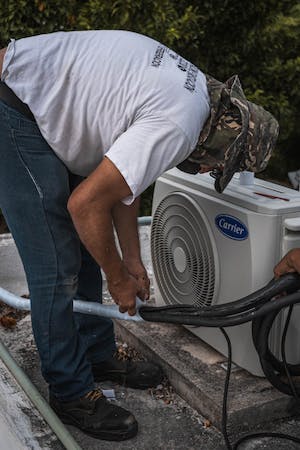How Air Conditioning Works
by siteadmin

Air conditioning systems remove heat from indoor air and make living more comfortable in your home, as well as decreasing risk of dehydration that can lead to heat stroke or other health problems.
An air conditioner works by employing phase conversion principles to change a refrigerant from liquid to gas form, then pumping this heat-absorbing refrigerant outside through an evaporator coil and compressor.
Compressor
Your compressor is at the core of your air conditioning system, moving refrigerant between your evaporator and condenser coils for cooling purposes.
Compressors can be powered by gasoline, diesel or electric motors; gasoline-driven models tend to be best-suited for home and small shop projects while diesel engines tend to be used in larger outdoor compressors.
To generate pressure, a piston inside of a compressor moves up and down within its cylinder, drawing in warm refrigerant gas while its downstroke reduces volume.
Some compressors utilize a single-stage compression cycle while others employ two stages, enabling them to generate higher pressures than their single-stage counterparts and cooling air before entering their first cylinders.
No matter what compressor you own, it is crucial that it remains in good condition. A dirty compressor can significantly decrease efficiency and lead to mechanical failure; to avoid this from happening, periodically inspect ductwork and coils for dirtiness before cleaning them thoroughly in order to improve indoor air quality and save on cooling costs.
Condenser
Condensers are essential components of an air conditioning system, converting high-pressure refrigerant gas to liquid form before returning it back into your system and keeping your home cool again.
Refrigeration systems work by passing refrigerant through coils in the condenser unit that are typically constructed out of copper-based. These coils feature fans and metal fins to dissipate heat generated as it passes through them, discharging heat while doing its work.
Once refrigerant has passed through coils and into the compressor, it is compressed further in an effort to turn it back into liquid form. This is known as desuperheating; during which multiple passes through the compressor will help cool it back down to saturation temperature before its transformation back into liquid state can occur.
When your condenser shows signs of damage or malfunction, it's essential that a professional conduct an immediate assessment and inspection. Quick action could save money and prevent the unit from shutting down completely.
Evaporator
Modern air conditioning systems rely heavily on their evaporator as an essential component. Working together, these two parts remove heat from your home, carry it through the unit, and release it outside – all to maintain your desired thermostat temperature setting.
Your air conditioner's evaporator coils are constructed from copper tubing that conducts heat efficiently. They're located close to the blower fan for efficient functioning.
As warm air passes over an evaporator coil, its refrigerant absorbs heat from it, changing from liquid to vapor form and dissipating heat back into the surrounding atmosphere and thus cooling it down.
If your refrigerant is not absorbing enough heat, it won't convert into vapor and your air conditioner won't work as intended. Furthermore, pinhole leaks could form and it is essential that your evaporator remain free from dust to ensure optimal functioning.
Ductwork
Ductwork is an integral component of air conditioning systems. Without it, your home would likely become colder than necessary and the conditioned air from your HVAC unit could escape before reaching its target destination.
There are various types of ductwork you can incorporate into your HVAC system, each offering distinct advantages and disadvantages.
Flexible ductwork tends to be less costly and simpler to install than rigid ducts; however, flexible ducts sometimes contain bends and kinks which reduce efficiency by restricting airflow.
Rigid ductwork is more durable and resistant to higher temperatures than its flexible counterpart, and can even be constructed from different materials, including fiberglass.
Ductwork connects directly to an HVAC system's supply and return plenums, where air-conditioned or heated air that passes through ductwork is stored before being released into its destination.
https://www.hvacparkcityut.com/
air conditioning replacement park city ut
Air conditioning systems remove heat from indoor air and make living more comfortable in your home, as well as decreasing risk of dehydration that can lead to heat stroke or other health problems. An air conditioner works by employing phase conversion principles to change a refrigerant from liquid to gas form, then pumping this heat-absorbing…
Recent Posts
- Condon Total Comfort, Inc. Offers Top-notch HVAC Services
- Clearing the Air: Duct Cleaning Alexandria Debunks Common Myths Surrounding Air Duct Cleaning
- Clearing the Dust: Duct Cleaning Louisville KY Shares Tips to Make Your Home Less Dusty
- Exploring the Drawbacks of Duct Cleaning: Insights from Air Vent Cleaning Charlotte
- Grand Prairie HVAC Service: Your Trusted HVAC Company in Texas
